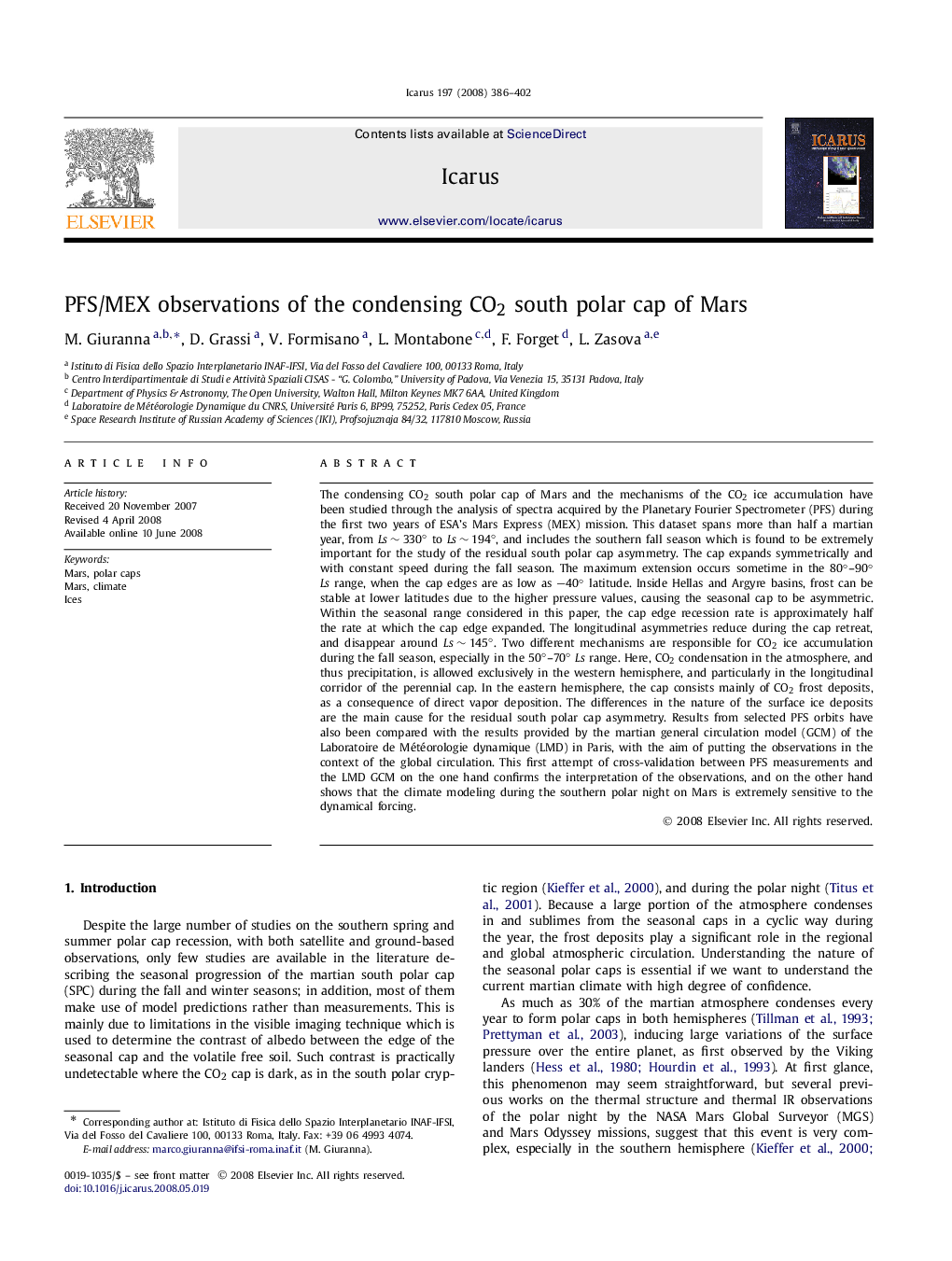| کد مقاله | کد نشریه | سال انتشار | مقاله انگلیسی | نسخه تمام متن |
|---|---|---|---|---|
| 1775789 | 1021207 | 2008 | 17 صفحه PDF | دانلود رایگان |

The condensing CO2 south polar cap of Mars and the mechanisms of the CO2 ice accumulation have been studied through the analysis of spectra acquired by the Planetary Fourier Spectrometer (PFS) during the first two years of ESA's Mars Express (MEX) mission. This dataset spans more than half a martian year, from Ls∼330°Ls∼330° to Ls∼194°Ls∼194°, and includes the southern fall season which is found to be extremely important for the study of the residual south polar cap asymmetry. The cap expands symmetrically and with constant speed during the fall season. The maximum extension occurs sometime in the 80°–90° Ls range, when the cap edges are as low as −40° latitude. Inside Hellas and Argyre basins, frost can be stable at lower latitudes due to the higher pressure values, causing the seasonal cap to be asymmetric. Within the seasonal range considered in this paper, the cap edge recession rate is approximately half the rate at which the cap edge expanded. The longitudinal asymmetries reduce during the cap retreat, and disappear around Ls∼145°Ls∼145°. Two different mechanisms are responsible for CO2 ice accumulation during the fall season, especially in the 50°–70° Ls range. Here, CO2 condensation in the atmosphere, and thus precipitation, is allowed exclusively in the western hemisphere, and particularly in the longitudinal corridor of the perennial cap. In the eastern hemisphere, the cap consists mainly of CO2 frost deposits, as a consequence of direct vapor deposition. The differences in the nature of the surface ice deposits are the main cause for the residual south polar cap asymmetry. Results from selected PFS orbits have also been compared with the results provided by the martian general circulation model (GCM) of the Laboratoire de Météorologie dynamique (LMD) in Paris, with the aim of putting the observations in the context of the global circulation. This first attempt of cross-validation between PFS measurements and the LMD GCM on the one hand confirms the interpretation of the observations, and on the other hand shows that the climate modeling during the southern polar night on Mars is extremely sensitive to the dynamical forcing.
Journal: Icarus - Volume 197, Issue 2, October 2008, Pages 386–402